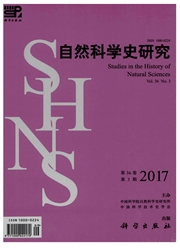

 中文摘要:
中文摘要:
作为传统日食理论中的核心算法,视差算法历来受到天文学家的高度重视。系统全面地研究古代希腊、印度、阿拉伯和中国等文明的视差理论,有助于我们深入理解和客观评价这些文明的日食计算和预报水平。文章在前人的研究基础上,选择各个文明中一些比较有代表性的历法,对不同文明的视差理论进行了全面系统的考察与研究,包括视差算法的造术原理、精度、模型和历史沿革,并对它们之间的异同和优缺点作了较为详细的比较。
 英文摘要:
英文摘要:
As a core algorithm in solar eclipse theory, parallax algorithm was highly emphasized by all ancient astronomers. To evaluate the solar eclipse theory of mathematical astronomy in ancient Greece, India, Arabia and China is helpful for us to study in detail the parallax algorithm of solar eclipse theory in these civilizations. Based on the original works and previous studies, this paper researches the parallax theory in ancient Greece, India, Arabia and China with some representative calendars as examples, including their principle, precession, model and the history of parallax algorithm. In addition, the paper also makes a comprehensive comparison for the similarities and differences of the parallax algorithm of solar eclipse theory in Greece, India, Arabia and China.
 同期刊论文项目
同期刊论文项目
 同项目期刊论文
同项目期刊论文
 期刊信息
期刊信息
